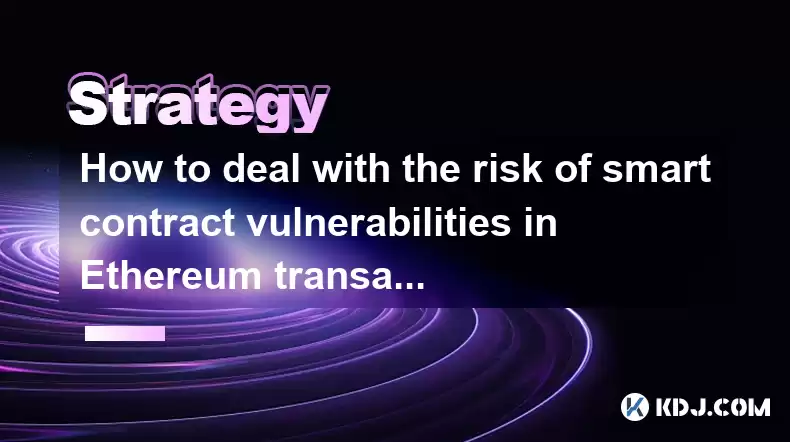-
 Bitcoin
Bitcoin $117800
-0.93% -
 Ethereum
Ethereum $3595
-3.74% -
 XRP
XRP $3.255
-7.56% -
 Tether USDt
Tether USDt $1.000
0.00% -
 BNB
BNB $769.8
-0.05% -
 Solana
Solana $190.0
-6.65% -
 USDC
USDC $0.9999
0.01% -
 Dogecoin
Dogecoin $0.2449
-8.56% -
 TRON
TRON $0.3107
-1.02% -
 Cardano
Cardano $0.8207
-7.05% -
 Hyperliquid
Hyperliquid $42.90
-3.57% -
 Stellar
Stellar $0.4320
-7.31% -
 Sui
Sui $3.746
-4.91% -
 Chainlink
Chainlink $18.13
-6.70% -
 Hedera
Hedera $0.2495
-8.65% -
 Bitcoin Cash
Bitcoin Cash $510.6
-2.01% -
 Avalanche
Avalanche $23.94
-3.95% -
 Litecoin
Litecoin $113.6
-2.15% -
 Shiba Inu
Shiba Inu $0.00001405
-7.72% -
 UNUS SED LEO
UNUS SED LEO $8.967
-0.02% -
 Toncoin
Toncoin $3.165
-9.97% -
 Polkadot
Polkadot $4.180
-5.51% -
 Ethena USDe
Ethena USDe $1.001
-0.01% -
 Uniswap
Uniswap $10.07
-4.95% -
 Monero
Monero $320.9
-1.30% -
 Pepe
Pepe $0.00001299
-6.17% -
 Bitget Token
Bitget Token $4.648
-3.05% -
 Dai
Dai $0.9999
0.01% -
 Aave
Aave $290.4
-5.24% -
 Bittensor
Bittensor $432.1
-3.82%
How to deal with the risk of smart contract vulnerabilities in Ethereum transactions?
Smart contract vulnerabilities pose significant risks to Ethereum transactions, making it critical to implement best practices, utilize scanning and auditing tools, monitor activity, and consider insurance options to protect against financial losses.
Feb 25, 2025 at 02:25 pm

Key Points
- Understand the nature of smart contract vulnerabilities and their potential impact on Ethereum transactions.
- Implement best practices for smart contract development to mitigate vulnerabilities.
- Utilize tools and services for scanning and auditing smart contracts.
- Monitor smart contract activity and transactions for suspicious or malicious behavior.
- Consider insurance options to protect against financial losses caused by smart contract vulnerabilities.
In-Depth Analysis
1. Understanding Smart Contract Vulnerabilities
Smart contracts, self-executing programs deployed on the Ethereum blockchain, automate business logic, facilitating various transactions and applications. However, they can also introduce vulnerabilities due to coding errors, logical flaws, and design weaknesses. Vulnerabilities can enable attackers to exploit smart contracts, manipulate transactions, and steal funds.
2. Best Practices for Smart Contract Development
Minimizing smart contract vulnerabilities requires diligent development practices:
- Code auditing: Conduct thorough code reviews to identify and fix potential vulnerabilities before deployment.
- Use secure coding standards: Adhere to established coding standards (e.g., Solidity best practices) to minimize errors.
- Limit code complexity: Keep smart contract code simple and concise to reduce the likelihood of vulnerabilities.
- Test and simulate: Perform extensive testing and simulations to identify potential issues under various conditions.
3. Smart Contract Scanning and Auditing
Specialized services and tools can assist in detecting and addressing vulnerabilities:
- Static analysis tools: Analyze smart contract code to identify potential vulnerabilities and coding errors.
- Dynamic analysis tools: Test smart contract behavior and interactions with other contracts to uncover vulnerabilities.
- Auditing firms: Hire reputable auditing firms to provide independent assessments of smart contract security.
4. Monitoring Smart Contract Activity
Continuous monitoring of deployed smart contracts is crucial for identifying suspicious activity:
- Track transactions: Monitor incoming and outgoing transactions to identify anomalies or irregularities.
- Watch for suspicious events: Set alerts to flag unusual or potentially malicious events related to smart contract interactions.
- Stay up-to-date on vulnerabilities: Keep abreast of discovered vulnerabilities and best practices to mitigate risks.
5. Insurance Options for Smart Contract Vulnerabilities
Consider purchasing insurance solutions specifically designed to cover financial losses resulting from smart contract vulnerabilities:
- Insurance policies: Obtain policies that provide coverage for lost funds due to smart contract exploits.
- Risk assessment services: Engage with firms that provide risk assessments and advisory services to help manage smart contract risks.
- Evaluate coverage options: Explore insurance options that align with your risk appetite and financial constraints.
FAQs
Q: What are the most common types of smart contract vulnerabilities?
A: Common vulnerabilities include re-entrancy attacks, overflow and underflow errors, gas limit manipulation, and DAO attacks.
Q: How can I prevent smart contract vulnerabilities?
A: Implement best practices, utilize auditing services, conduct thorough testing, and establish monitoring mechanisms.
Q: What are the financial implications of a smart contract vulnerability exploit?
A: Exploits can result in stolen funds, lost investor confidence, and reputational damage.
Q: How can I prepare for potential vulnerabilities in my smart contracts?
A: Conduct risk assessments, implement monitoring systems, and consider purchasing insurance options.
Q: What resources are available to help me mitigate smart contract risks?
A: Utilize static and dynamic analysis tools, consult with auditing firms, and leverage industry best practices.
Disclaimer:info@kdj.com
The information provided is not trading advice. kdj.com does not assume any responsibility for any investments made based on the information provided in this article. Cryptocurrencies are highly volatile and it is highly recommended that you invest with caution after thorough research!
If you believe that the content used on this website infringes your copyright, please contact us immediately (info@kdj.com) and we will delete it promptly.
- Sui Price, Open Interest, and the $4 Breakout: Will SUI Surge?
- 2025-07-23 22:50:13
- BlockDAG, XRP, and DOT: Riding the Crypto Wave Like a Wall Street Pro
- 2025-07-23 23:10:13
- Dogecoin, Hedera, and PayFi: Altcoins Heating Up in 2025
- 2025-07-23 23:50:12
- NFT Penguins Rally: PENGU's Rise and the CryptoBatz Bounce
- 2025-07-23 23:10:13
- Dogecoin's Future: Will the Meme Dream Live On?
- 2025-07-23 22:30:13
- Mara's Bitcoin Bet: Debt, Mining, and Shadow Banking?
- 2025-07-23 22:30:13
Related knowledge

How to avoid common crypto investment mistakes?
Jul 13,2025 at 01:35am
Understanding the Risks of Crypto InvestmentInvesting in cryptocurrency can be highly rewarding, but it also comes with significant risks. One of the ...

What is a long-short crypto strategy?
Jul 15,2025 at 10:56am
Understanding the Basics of a Long-Short Crypto StrategyA long-short crypto strategy is an investment approach where traders simultaneously take long ...

What is a long-short crypto strategy?
Jul 11,2025 at 01:28pm
Understanding the Basics of Long-Short Crypto StrategyA long-short crypto strategy is an investment approach where traders take both long and short po...

How to use the RSI indicator for crypto?
Jul 12,2025 at 03:56pm
Understanding the RSI Indicator in Cryptocurrency TradingThe Relative Strength Index (RSI) is a momentum oscillator used to measure the speed and chan...

Is copy trading a good strategy for crypto beginners?
Jul 12,2025 at 08:28am
Understanding Copy Trading in the Cryptocurrency MarketCopy trading is a strategy where novice traders replicate the trades of experienced investors a...

How to build a crypto portfolio with $1000?
Jul 13,2025 at 08:14pm
Understanding the Basics of Cryptocurrency InvestmentBuilding a crypto portfolio with $1000 starts with understanding the fundamentals of cryptocurren...

How to avoid common crypto investment mistakes?
Jul 13,2025 at 01:35am
Understanding the Risks of Crypto InvestmentInvesting in cryptocurrency can be highly rewarding, but it also comes with significant risks. One of the ...

What is a long-short crypto strategy?
Jul 15,2025 at 10:56am
Understanding the Basics of a Long-Short Crypto StrategyA long-short crypto strategy is an investment approach where traders simultaneously take long ...

What is a long-short crypto strategy?
Jul 11,2025 at 01:28pm
Understanding the Basics of Long-Short Crypto StrategyA long-short crypto strategy is an investment approach where traders take both long and short po...

How to use the RSI indicator for crypto?
Jul 12,2025 at 03:56pm
Understanding the RSI Indicator in Cryptocurrency TradingThe Relative Strength Index (RSI) is a momentum oscillator used to measure the speed and chan...

Is copy trading a good strategy for crypto beginners?
Jul 12,2025 at 08:28am
Understanding Copy Trading in the Cryptocurrency MarketCopy trading is a strategy where novice traders replicate the trades of experienced investors a...

How to build a crypto portfolio with $1000?
Jul 13,2025 at 08:14pm
Understanding the Basics of Cryptocurrency InvestmentBuilding a crypto portfolio with $1000 starts with understanding the fundamentals of cryptocurren...
See all articles

























































































